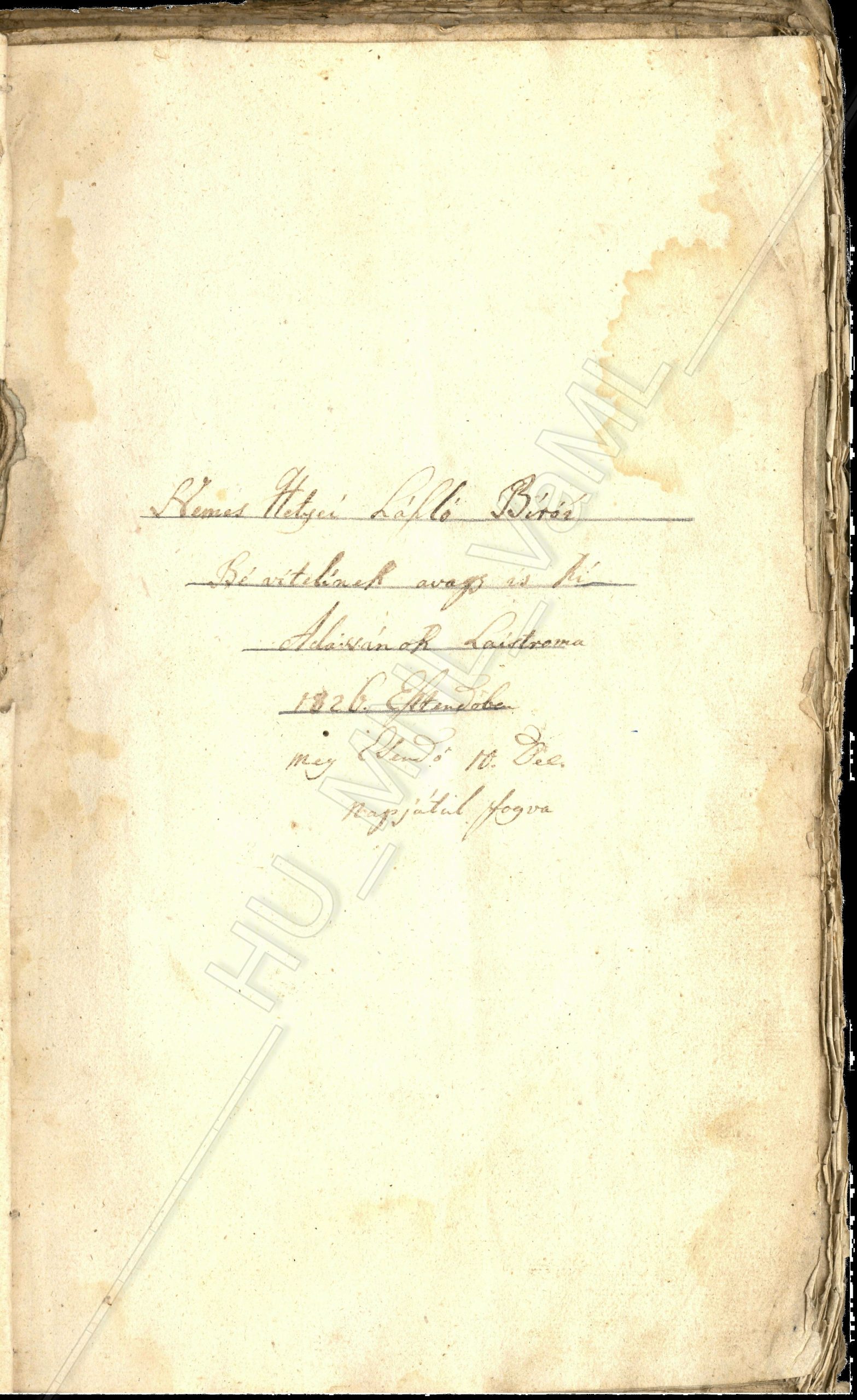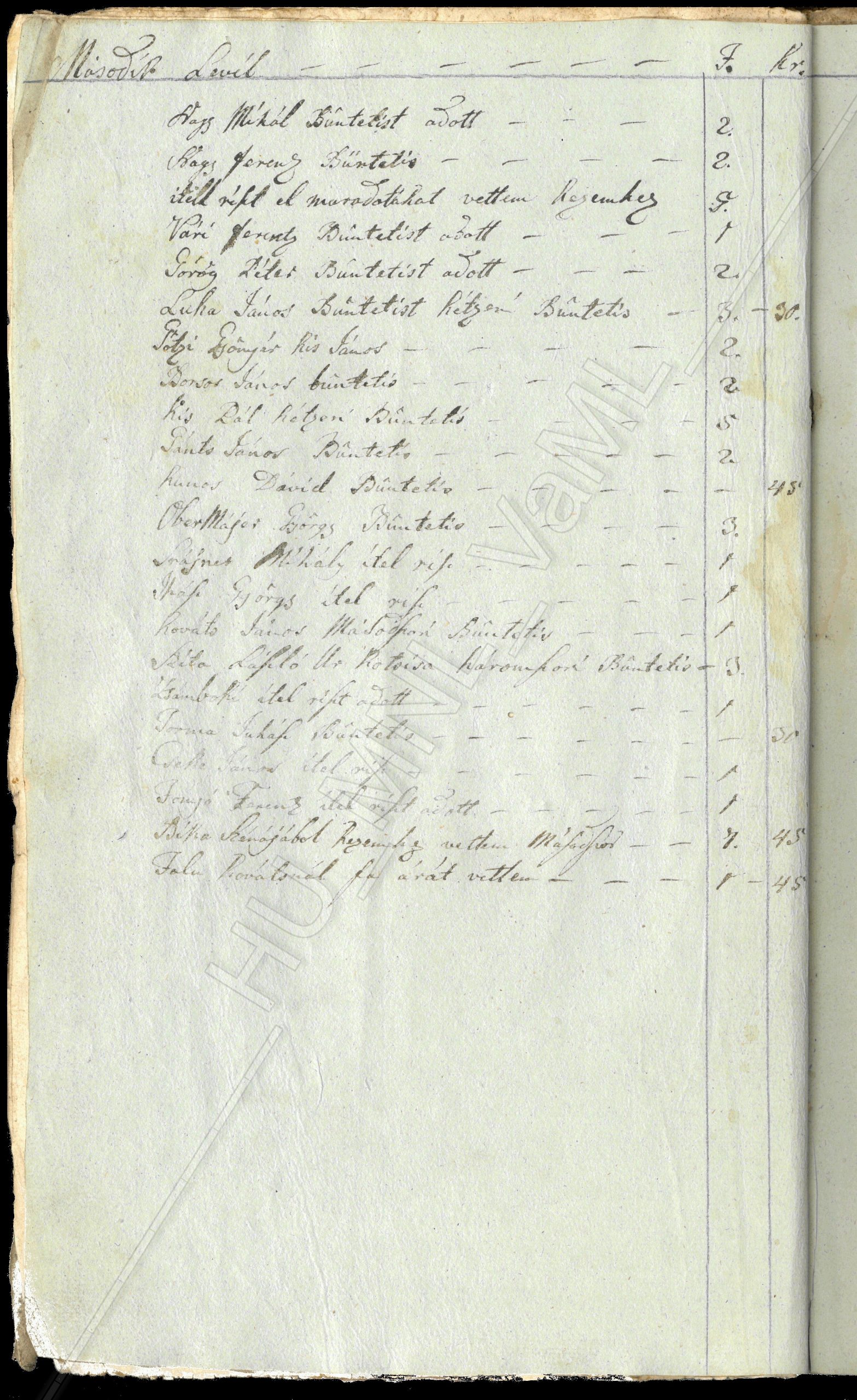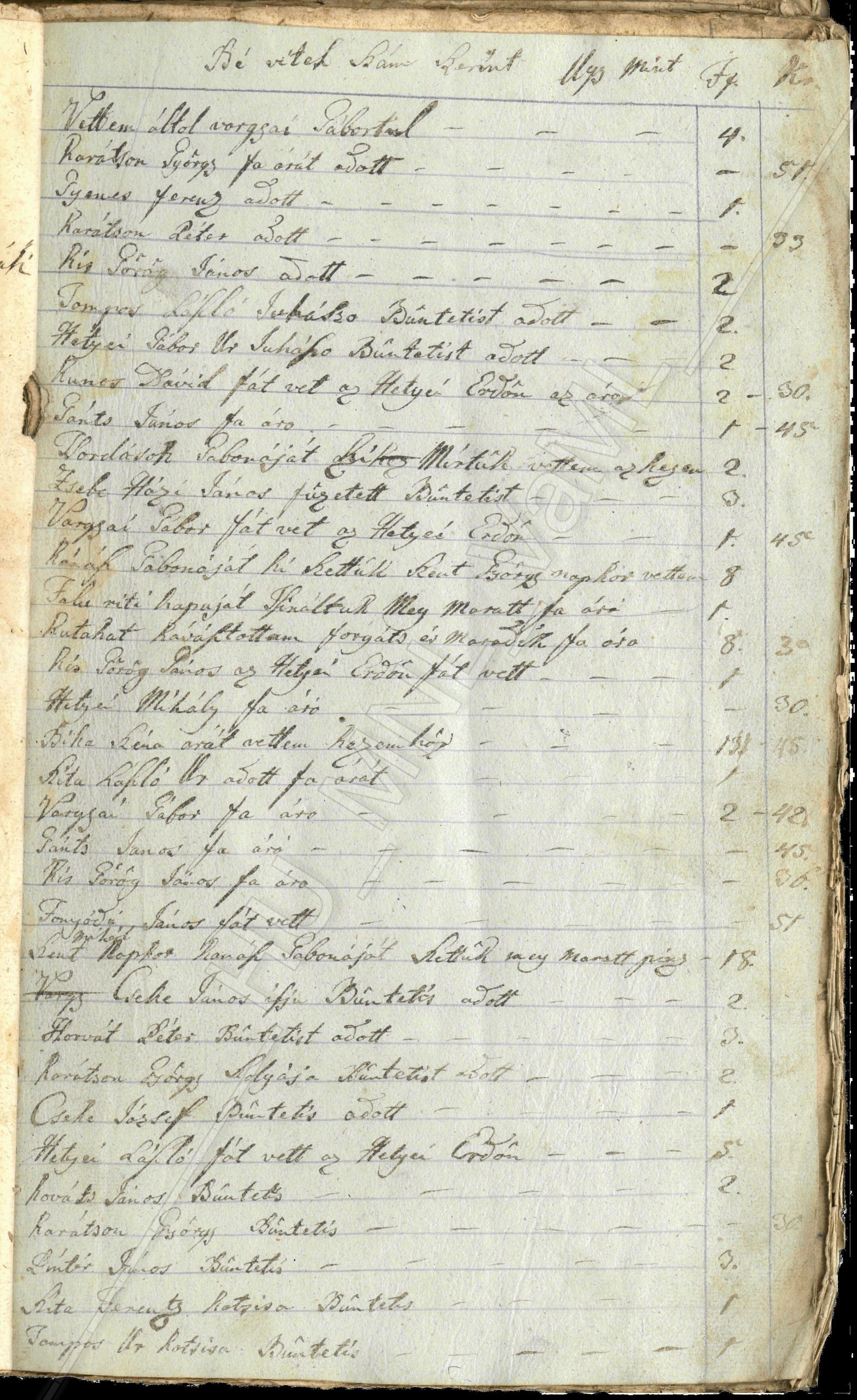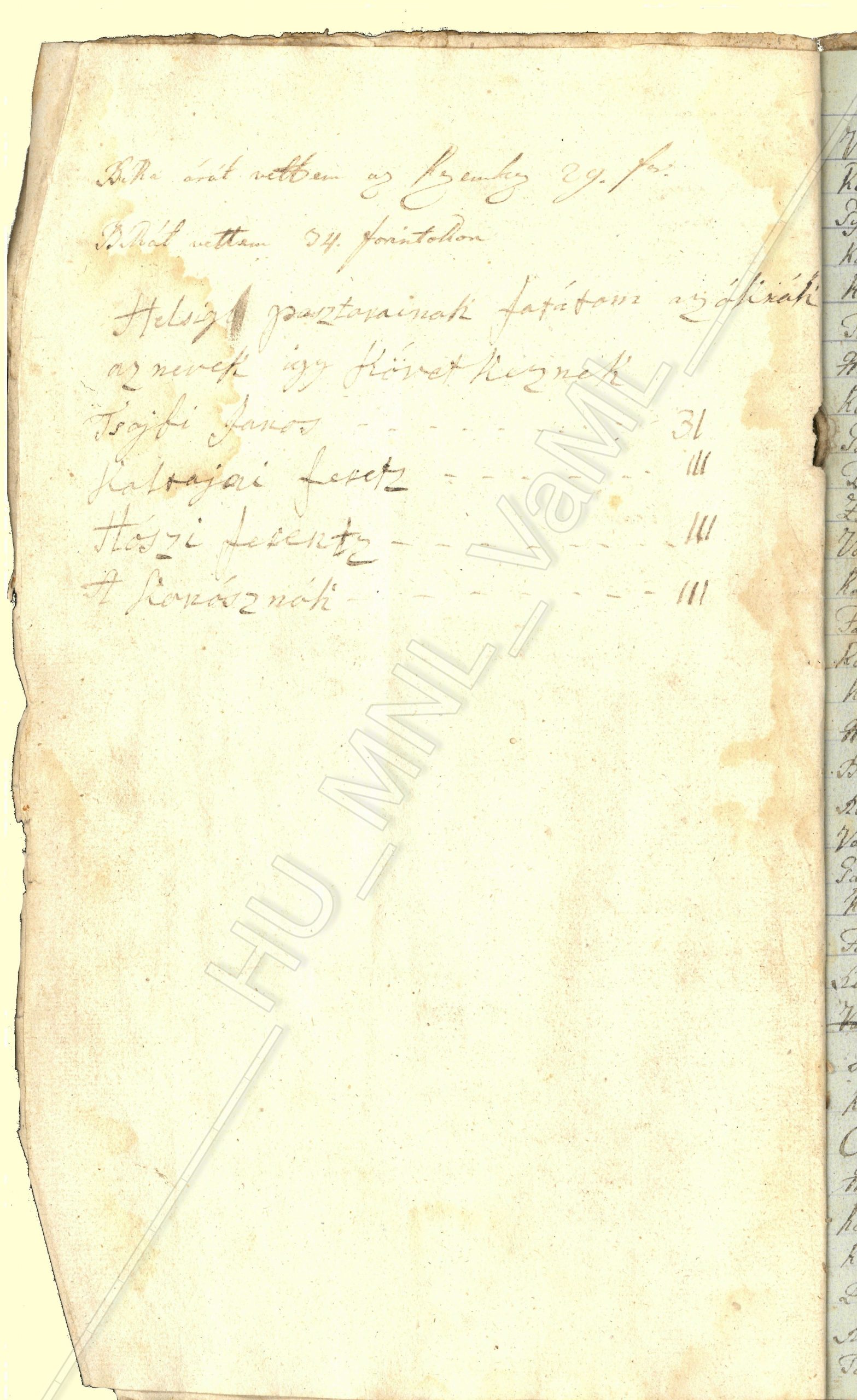- Cross-border database on the cultural heritage of the Slovenian-Hungarian cross-border region – from 120 selected settlements of the Prekmurje Region in Slovenia and Vas County in Hungary
Archive Material

Village mayor's account book from Egyházashetye
document
Hetyei László village mayor
1826-1832
Paper
Until 1848, noble public estates, 'compossessoratus' in Latin, or gentry villages, functioned as a form of feudal joint ownership. Public estates are usually formed by a common written agreement. The judge was the head of the landowners' council. The council could pass judgment on minor misdemeanors, which could be appealed to the county at second instance. Not only the fines but also all other municipal revenues and expenditures were recorded in this book. From the few years documented by the source, we can obtain excellent data on rural life in the Reform age.
Information on digitization
- Name of site
- Egyházashetye
- Size description
- A dokumentum oldalainak méretei
- Length
- 60 folio
- Place of origin/discovery
- Egyházashetye
- Specialist description
- A dokumentum fizikai állapota miatt nem a teljes anyag hozzáférhető. A restaurálás befejezése után az MNL Vas Megyei Levéltárban a kutatók rendelkezésére fog állni és a teljes digitalizálás is megtörténik.
- Name of institution or personage holding object; identification number of object
- Magyar Nemzeti Levéltár Vas Megyei Levéltára V. Községbírói iratok, 4. doboz
- Written sources
- MAJTHÉNYI László: Egyházashetye. [Budapest], [2002], 154 p. (Száz magyar falu könyvesháza)
- File name
- MNL_VaML_0034_B_0013 - MNL_VaML_0034_B_0016
- Resolution
- 72 dpi, 300 dpi
- Restrictions on use
- Korlátozás nélkül
- Date of documentation
- 2019-10-03
- Person documenting
- Kóta Péter, Pál Ferenc
Photo gallery




